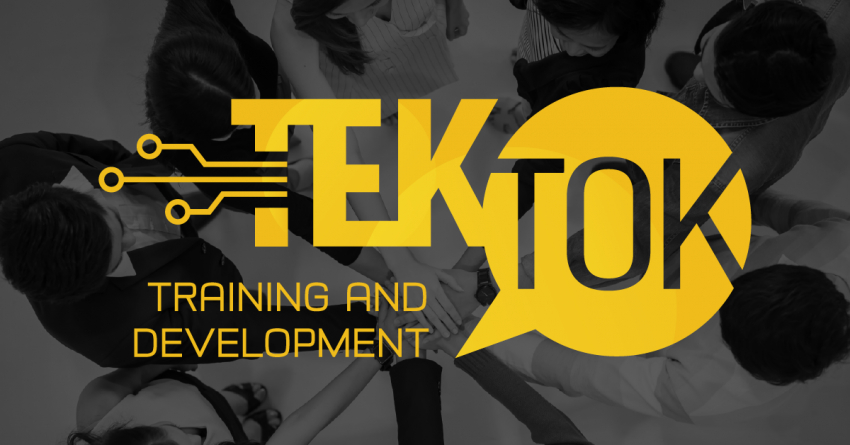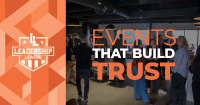Employee training and development is essential not only for AEC staff to improve their skills, but also for firms to enhance employee productivity and improve company culture.
Abilities – the power or competency to do something. The word is often synonymous with capability, potential, or capacity. Abilities result from applying the skills to the extent that doing something physically or mentally becomes natural or intuitive to do.
Assessment – evaluating the knowledge, skills, or performance of an individual or an organization related to a particular subject or process.
Continuous learning – the process of learning on an on-going basis. When used in the context of professional development, continuous learning in the workplace is about developing new skills and knowledge while also reinforcing what has already been learned.
Corporate Education – a collection of professional development activities offered by a company to enhance the skills and knowledge of employees. The courses could be offered formally (through a university or college) or informally (non-collegiate institution).
Critical Thinking – using logic and reason to identify the strengths and weaknesses of various solutions or approaches to a problem.
Education – a general term to describe employee training or learning.
Developmental Feedback – this type of feedback goes beyond telling an employee what he or she is doing well or badly. Instead, it focuses on areas of improvement with the goal of developing skills rather than simply evaluating performance.
Executive Presence – the image and behaviors that demonstrate leadership competence. It encompasses the way an executive acts, speaks, and looks. Leaders who possess a strong executive presence inspire employees at every level. Offering this type of training to junior level employees can help them to one day take on leadership roles.
Facilitator/Instructor/Teacher – professionals who assess a learner’s knowledge and help shape curriculum to help build upon and expand it during the training.
Goal Orientation –broadly defined, goal orientation is the degree to which a person or group of people work toward completing specific goals. There are two main types of goal orientations: performance and learning. Performance oriented team members are interested in demonstrating their competence while learning oriented staff are interested in increasing their competence. Helping employees develop a learning goal orientation can help increase participation in training and applying new skills on the job.
Immersive Learning – an interactive learning environment that helps individuals learn skills and techniques through sight, sound, and touch. By replicating real life scenarios using artificial or digitally created content and environments, new skills and techniques can be learned and perfected. For example, immersive technology like VR (virtual reality) can support the understanding process for teaching construction details, bridge inspections, or exploring design ideas.
Information – a “unit of awareness” about somebody or something. Training is an organized activity that provides information and instruction to help a learner attain and build knowledge and/or skill.
Job – a collection of tasks and responsibilities that an employee is responsible for performing and completing.
Knowledge – understanding gained through learning or experience. Information evolves to knowledge through gaining content, perspective, and scope about the information.
Leadership Development – courses, training, or educational programs whose purpose is to improve the hard and soft skills of leaders within an organization. While each company’s program is different, it often includes courses and programs that focus on shared learning, peer support, sales and negotiation skills, mentorship, and coaching for next-generation leaders.
Learning – enhancing one’s knowledge, understanding or skills. Some AEC professionals view learning as enhancing one’s capacity to perform. Some view learning as a way of being that places value on receiving feedback and increasing understanding. In some circumstances knowledge is converted to skills; that is, the learner knows how to apply the knowledge to get something done.
Mentoring – training in which a more experienced employee (the mentor) provides expertise, support, and guidance to a less experienced employee (the mentee) to advance career growth and success in the workplace. Informal mentoring refers to supportive relationships developed outside of an organized program or activity.
Perceptions – a way of organizing, identifying, and interpreting information and experiences in order to understand something or someone. When people are stuck on a problem, it is often because they are looking at the problem from one perspective.
Professional Development – an individual’s continued training and education in the workplace. It equips employees with the tools and skills they need to perform in their current job role, prepares them for advancement, and keeps them up to date on industry trends and best practices.
Role – a set of responsibilities or expected results associated with a job. A job usually includes several roles.
Skills - applying knowledge, training, or practice in an effective and efficient manner to get something done.
Skills Gap – the difference between the training and experience an employee possesses and the skills needed to perform a job well. The gap can vary depending on the job and types of skills required for the job. For example, the evolution of building information modeling (BIM) resulted in a disparity between technology and skills. Through on-the-job training, instructor-led courses, and even BIM-specific degree programs, the skills gap is bridged.
Soft Skills- the non-technical skills that characterize a person’s relationships with other people. Soft skills often requested by employees include teamwork, interpersonal, communication, adaptability, problem solving, critical thinking, and time management.
Task – an assigned activity to be completed within a certain time. A task is often a set of activities needed to produce a result (e.g., redlining plans, creating a graphic, writing an email). Complex positions in the organization may include many tasks, which are sometimes referred to as functions.
Team Coaching – a form of coaching in which a single coach works with a group to learn, practice, enhances collective intelligence, and integrates new behavior. The group holds each other accountable and learns from each other as well as from the coach.
Technical Training – a crucial component of employee development and business success, technical training addresses the hard skills employees need to perform daily tasks accurately. In marketing, it could include learning how to use the firm’s customer relationship management (CRM) to input new clients and contacts.
Training – a useful tool where the instructor and learner work together to enhance a learner’s knowledge or skill so the learner can perform a particular task or job correctly and effectively.
Workshop – typically used for smaller groups, a training program that focuses on one skill or topic area to teach in detail during one or more brief sessions.






